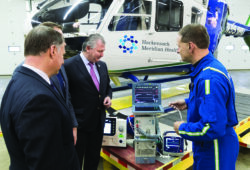Granting patient advisors more of a decision-making role in a hospital is becoming more common. In the September 2014 article, “A Stronger Patient Voice Can Lead to Better Care,” Hospitals and Health Networks staff writer Marty Stempniak talks about the growing movement among hospitals to use patients and families as advisors, granting them actual power and influence over care decisions.
Stempniak gives examples of several hospitals that encourage such participation experiencing a windfall of benefits, including:
- Bolstered clinical outcomes
- Reduction in medical errors
- Improved patient satisfaction
- Reduction in costs
- Steady reduction in malpractice lawsuits
- Improved operational efficiencies
Given that patient engagement has multiple benefits, why aren’t all hospitals scrambling to utilize patients and families as advisors? According to a 2013 Health Research & Education Trust survey, hospital leadership often points to three reasons: competing priorities, the time it takes to implement these programs and the time pressures inherent in involving new voices in clinical tasks, such as in rounding or change-of-shift reports.
But those challenges might not outweigh the advantages of encouraging patient interaction. Stempniak quotes Karen Frush, M.D., now vice president of Quality at LifePoint, which recently instituted a Patient and Family Advisory Board: “Patients do better, have better treatment results, stay healthier and promote wellness when we recognize [healthcare] as a partnership, rather than the paternalistic way we’ve looked at it historically,” Frush says.
Share Email





